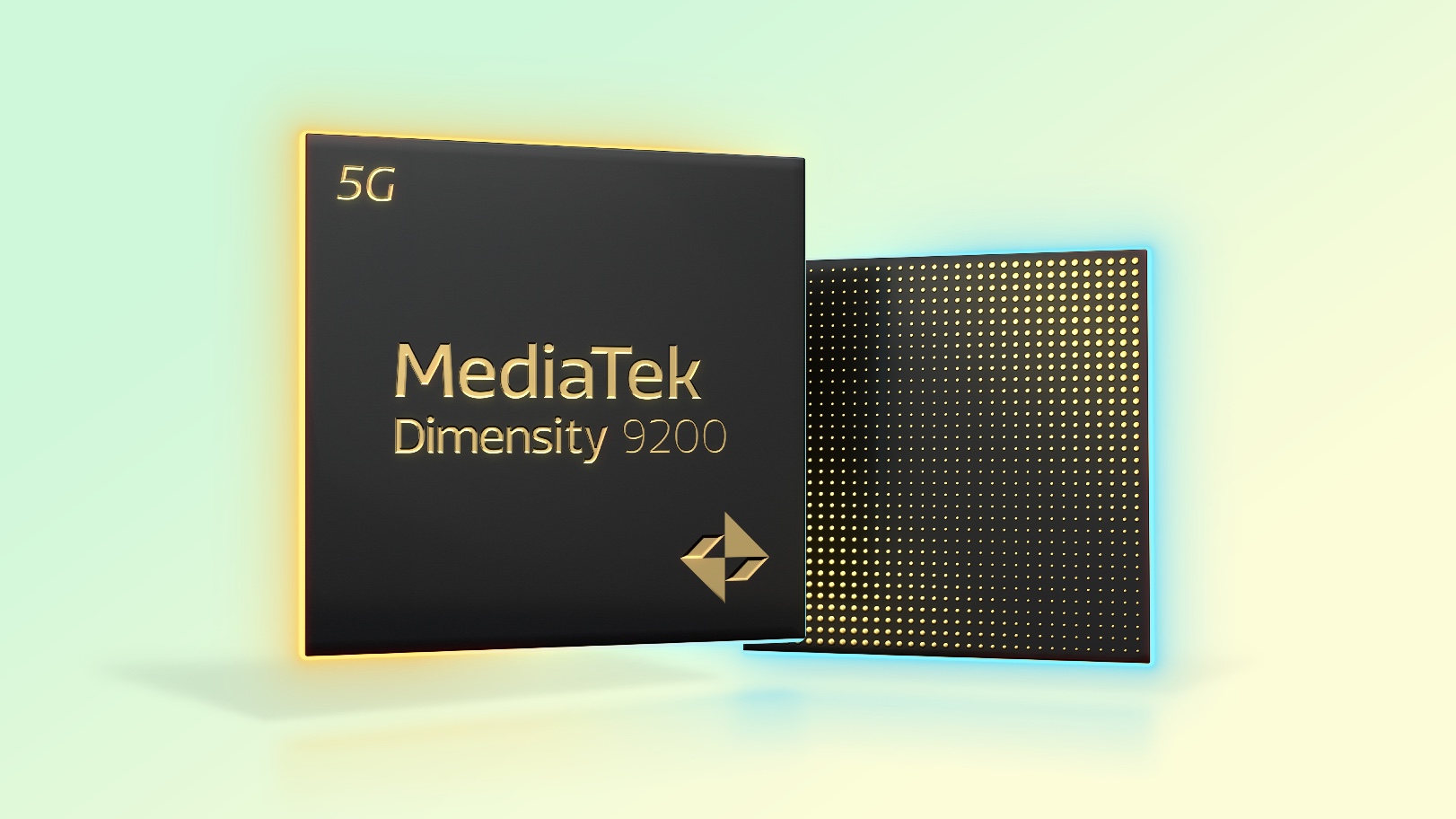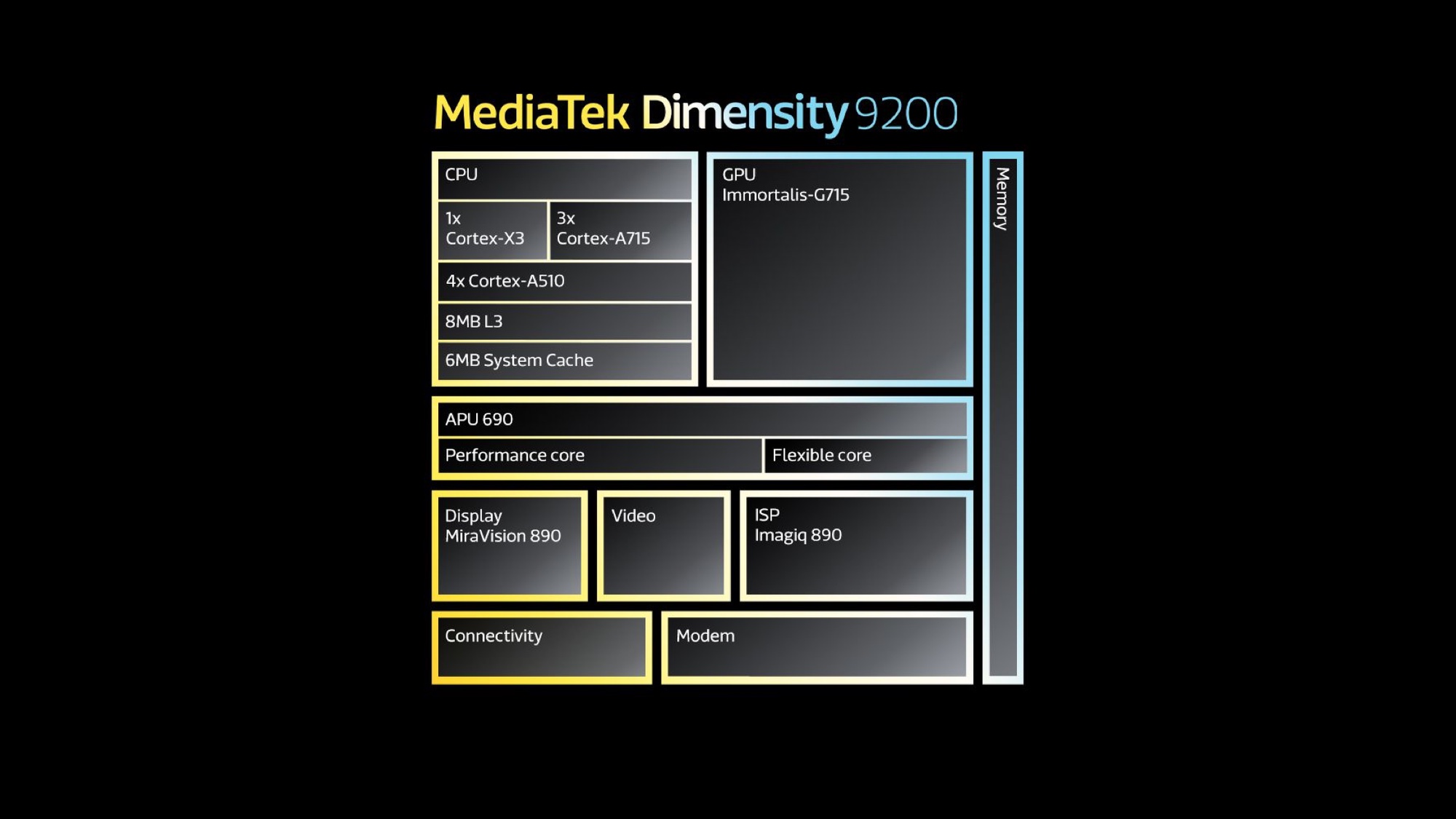MediaTek Dimensity 9200 chip unveiled for Android phones — could it beat Snapdragon 8 Gen 2?
Here's MediaTek's answer to Qualcomm's Snapdragon silicon for flagship phones

MediaTek unveiled its latest flagship system-on-chip today (November 8), promising better performance and improved power efficiency for Android phones that adopt the new silicon. Now the only question is whether MediaTek's new Dimensity 9200 can make a splash outside of the markets where the chip maker currently thrives.
MediaTek's former standard bearer, the Dimensity 9000, powers a number of phones, including devices from Xiaomi, Oppo, OnePlus and others. But those are phones that typically just come out in China and other parts of Asia. Certainly U.S. phone shoppers, if they're familiar with MediaTek's chips at all, know them from midrange and budget phones like Motorola's recent G series devices.
We'll find out which phones will feature the Dimensity 9200 soon enough — MediaTek says that handsets powered by the new silicon will be available before the end of the year. We'll keep an ear open for those announcements, but we still expect the next major flagship phone coming to the U.S. — the Samsung Galaxy S23 — to feature the next-generation Snapdragon 8 Gen 2 Qualcomm is expected to announce later this month.
Still, leaks about the Dimensity 9200 prior to today's unveiling should pique your interest in the new chipset. Leaked benchmarks, purportedly for a device powered by the Dimensity 9200, showed it posting impressive graphics performance scores, even topping the A16 Bionic found in Apple's iPhone 14 Pro models. Whether those leaked numbers match the actual performance of the chip is something we'll soon find out.
MediaTek Dimensity 9200: Specs and features
As for what we now officially know about the Dimensity 9200, it's built on a second-generation 4-nanometer process. For context, Apple's A16 Bionic is a 4nm chip, too, and the upcoming Snapdragon chipset is also expected to be built on a 4nm process.

According to MediaTek, the Dimensity 9200 will be the first mobile chip to include an Arm Cortex X3 with a clock speeding topping 3GHz. In addition, the chipset includes three Arm Cortex-A715 performance cores and four Arm Cortex-A510 efficiency cores. It's the first 64-bit-only system-on chip.
For performance gains, MediaTek says to expect a 12% boost in single-core Geekbench 5 scores over the Dimensity 9000. Multicore scores should be 10% higher.
Sign up to get the BEST of Tom's Guide direct to your inbox.
Get instant access to breaking news, the hottest reviews, great deals and helpful tips.
It's power efficiency that should be the real story here, as a MediaTek officials said they worked to improve thermal heat dissipation for the Dimensity 9200. The result has been a 4x delay in the time it takes for temperatures to rise, leading to better power performance. In fact, the Dimensity 9200 cuts power consumption by 25% from the Dimensity 9000.
The Immortalis-G715 GPU on the Dimensity 9200 has 11 cores, one more than on the Dimensity 9000's GPU. That should help fuel a 32% boost in graphics performance on the Manhattan 3.0 benchmark over last year's chipset. The MediaTek 9200 also supports ray tracing for more realistic lighting for game graphics.
With Google and Apple now emphasizing the artificial intelligence powers of the mobile chipsets they're building, MediaTek's Dimensity 9200 also introduces a 6th Gen AI processing unit, or APU. The upgraded APU should translate to big boosts in AI performance over last year's MediaTek silicon — up to 35%, MediaTek says.
Other noteworthy Dimensity 9200 specs include support for faster LPDDR5X 8533 Mbps memory and early support for Wi-Fi 7 connectivity. That latter feature arrives before most Wi-Fi 7-ready routers do, so phones running the Dimensity 9200 will be somewhat future-proof when it comes to connectivity. The Imagiq 890 image signal processor offers AI integration with a device's camera while supporting a dual stream AI shutter for crisp photos without blurriness; there's also support for RGBW sensors, which should mean improvements to brightness and details even in low-light images.
Editors' Note: Updated with additional information on the Dimensity 9200.
Philip Michaels is a Managing Editor at Tom's Guide. He's been covering personal technology since 1999 and was in the building when Steve Jobs showed off the iPhone for the first time. He's been evaluating smartphones since that first iPhone debuted in 2007, and he's been following phone carriers and smartphone plans since 2015. He has strong opinions about Apple, the Oakland Athletics, old movies and proper butchery techniques. Follow him at @PhilipMichaels.

